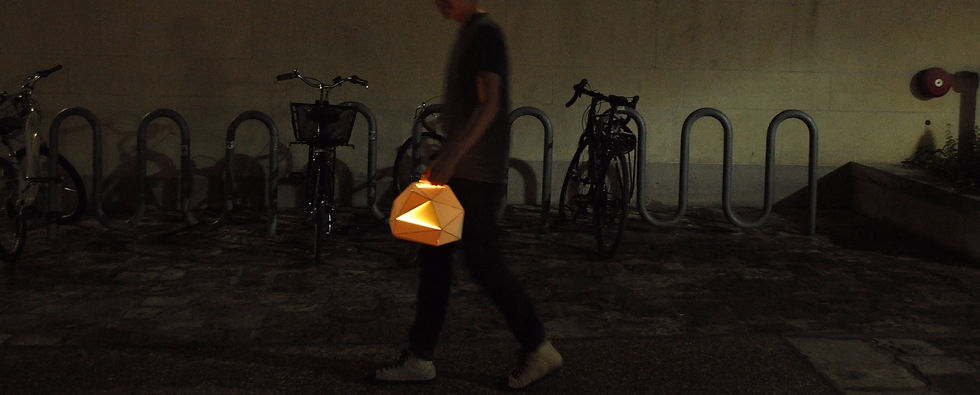
Nobo Lantern
2015 | Academic
Finalist in Improve UT Challenge.
Professors Matthew Tanteri and Keith Simon,
University of Texas at Austin
In partner with Kim Gabosch and Samantha Shiminski
Featured in the Austin Statesman and on Spectrum news.
Displayed at the Harry Ransom Center World of Wonders
Gala and Voices Against Violence’s Take Back the Night.
Meet Nobo. Designed to get you home safely each night, its orb-like, faceted character produces a warm, white light that will illuminate the space between Goldsmith Hall and West Mall Building as well as provide a light source to students as they travel around UT’s campus at night. Nobo lanterns produce equal amounts of ambient and direct light highlighting the path before you. As a part of UT’s Be Safe initiative, the lantern will serve as a way to provide students with a lit path no matter where or when they are walking on campus. GPS tracking monitors the location of walking students and the moving lanterns within campus. Batteries allow for the ability to charge devices such as cellphones on-the-go through the lantern.

+ Lanterns should serve as visually tangible objects that illuminate a students path and provide them safety. They should be at the human scale so that people can relate to them and feel safer in the space.
+ The second principle driving the design is versatility. The lanterns should be able to be used in some capacity during the day, and also have the potential to be used for events.
+ A third criteria is that the luminaire should emit strong ambient light. There must be enough light for a student to see in dark areas of the courtyard and campus, but it must not sparkle or be too direct in order to see clearly and not be distracting to other students walking. Something shiny or too direct provides a high contrast, making it hard to see surrounding dark areas.




LED
4.5V
71 lumens/watt
warm, white light
white base
1’ W x 8” H
1 1/2 lbs
semi-opaque white plastic
switch located on base
(0.0024kWh x 1,095 hrs) x $.03 = $.08
.08 x 10 = $.80
HDRI glare analysis

false color glare analysis

candlepower distribution curves
